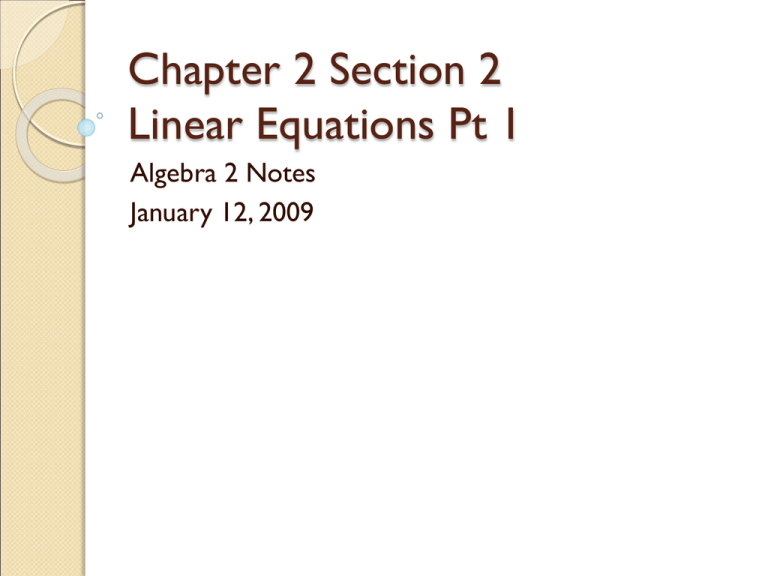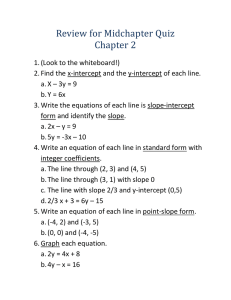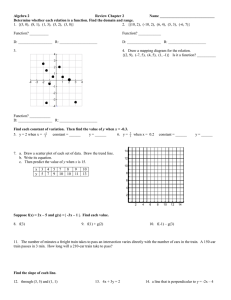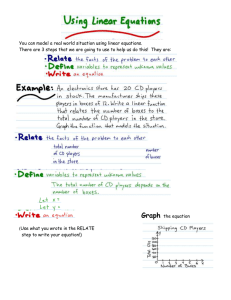Chapter 2 Section 2 Linear Equations Pt 1 Algebra 2 Notes
advertisement

Chapter 2 Section 2
Linear Equations Pt 1
Algebra 2 Notes
January 12, 2009
Warm-Ups
Find the domain and range of each relation and
determine whether it is a function:
a) {(2, 4), (4, 8), (8, 16)}
b) {(-1, 2), (-2, 5), (-2, 7), (0, 2), (9, 2)}
Evaluate the following expression for x = -2
Evaluate the following expression for x = 4
Linear Functions
Linear Function: A function who’s graph is a line.
A linear function can be expressed, or represented, by a
Linear Equation.
For Example: The linear equation y = 3x + 2 represents
this linear function
Graphing Linear Equations
Linear Equation:
Choose two values for x and find the corresponding
values for y
Plot the point for each ordered pair
Complete the graph by drawing a line through the
points
Make A Table:
Give it a try…
Graph the following equations in your notes:
What is the y-intercept of each graph? What is
the x-intercept of each graph?
Forms of Lines
Standard Form:
◦ You can graph a linear equation in standard
form by finding the x- and y-intercepts
Example: Graph the following equation
Forms of Lines cont.
Slope-Intercept Form:
◦ m represent the slope of the line
◦ b represents the y-intercept of the line
Forms of Lines cont.
Point-Slope Form:
◦
represents a point on the line
◦ m represents the slope of the line
Slope of a Line
What does “slope” mean to you???
Finding the Slope of a Line
Slope: the ratio of the vertical change (change in y)
over the horizontal change (change in x)
◦ Given two points on a line:
◦ Use the equation for slope to find the slope of that
line:
Finding the Slope of a Line
Find the slope of the line that goes
through the points:
Try One On Your Own:
Find the slope of each line that goes
through the points:
a)
b)
Finding Slope with Slope-Intercept
Form
What is the slope in this equation?
Convert the following equations into slope-intercept
form and then determine the slope of the line:
Homework #4
Pg 67 #3, 6, 8, 11-13, 1719, 32, 36






